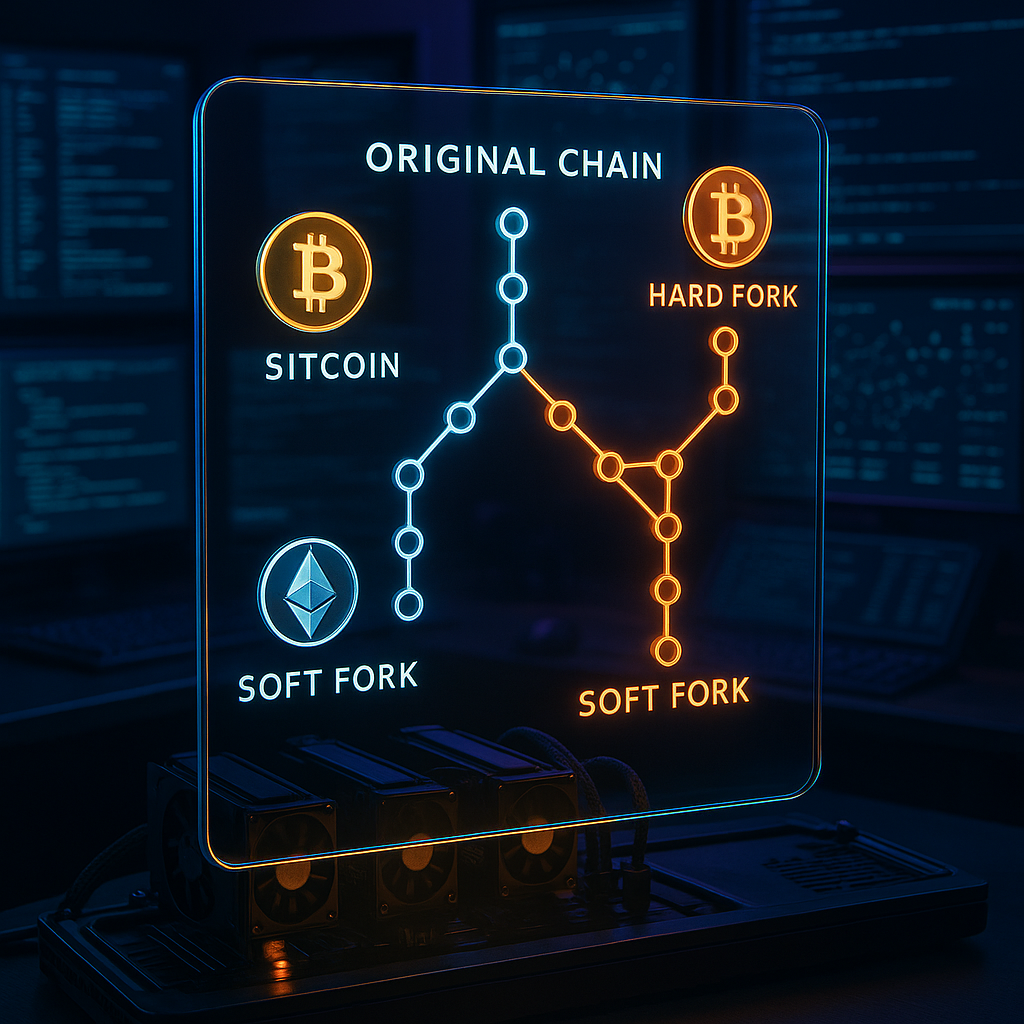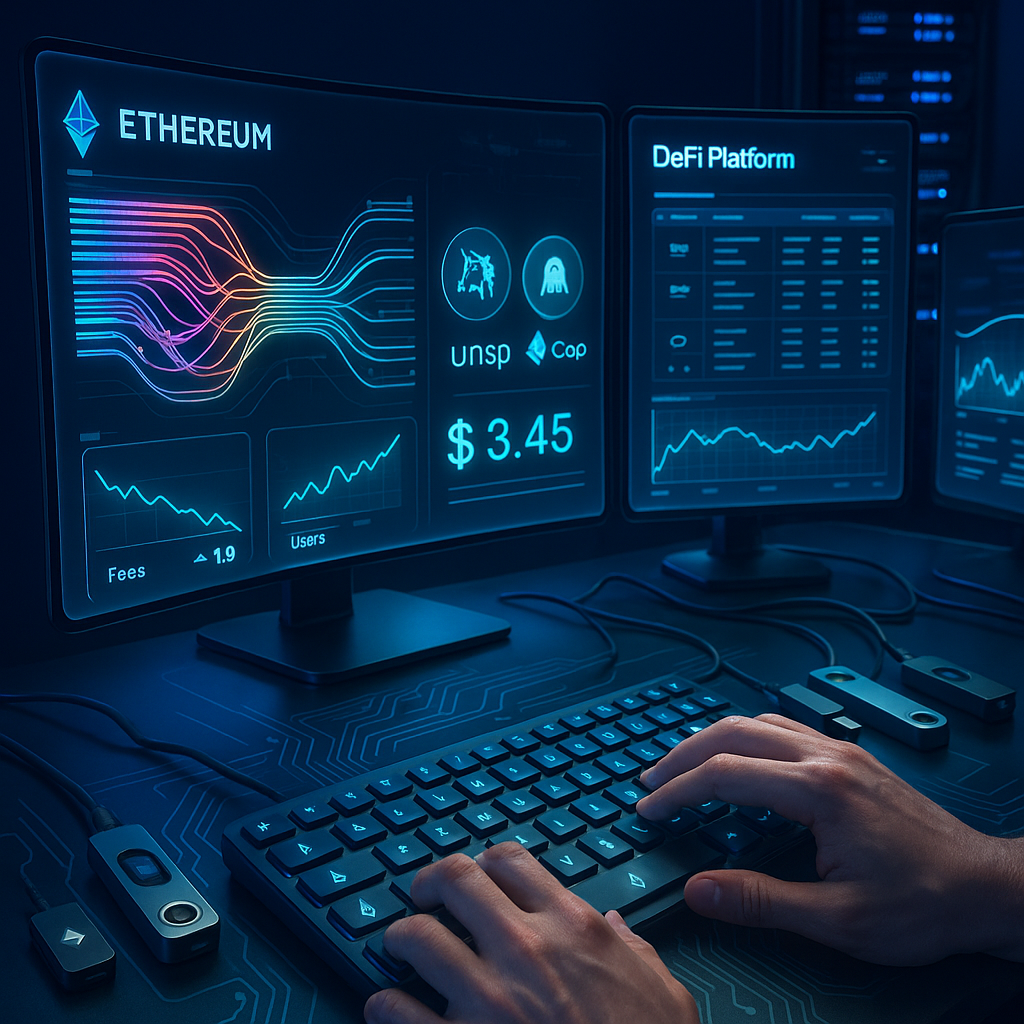Key Takeaways
Navigating decentralized exchanges (DEXs) unlocks full control over your crypto assets, but for newcomers, the process can seem daunting, especially when safety and smooth execution are essential. This guide provides a clear, step-by-step approach for using a DEX, covering not just the mechanics but also strategies to protect your assets as you trade in a peer-to-peer environment.
- Start with the right wallet and network: Set up a secure crypto wallet (such as MetaMask or WalletConnect), choose a reliable blockchain network, and fund your wallet with enough cryptocurrency to cover both trading and gas fees.
- Connect confidently and verify twice: Always double-check the DEX website URL and ensure the platform’s legitimacy before connecting your wallet. This is crucial for avoiding phishing scams and fraudulent sites.
- Understand how token swapping works: On a DEX, trades occur directly between users via liquidity pools and smart contracts. There is no central authority, so you control every step but must pay attention to factors like liquidity levels and accurate token contract addresses.
- Manage slippage strategically: Slippage impacts your trading efficiency. Setting it too high can make you vulnerable to front-running and poor trades; too low and your transaction might fail. Adjust the slippage according to market conditions and always review transaction previews closely.
- Stay aware of gas fees: Gas fees fluctuate based on network traffic. Check fee estimates before confirming any trade, and, when possible, time your trades outside periods of peak congestion to minimize costs.
- Prioritize security against frontrunning: Bots can exploit your transaction before it confirms, gaining an unfair advantage and costing you money. Protect yourself by limiting slippage, keeping transaction sizes moderate, and avoiding highly volatile or obscure tokens.
- Explore limit orders for more precision: Where available, use limit orders to automate buying or selling tokens at your ideal price. This approach reduces the need to chase market prices and helps you avoid costly mistakes.
- Diligently review, confirm, and track your transaction: Before signing any transaction, verify all details carefully. After execution, monitor your wallet and a blockchain explorer to confirm the trade settled as intended.
- Start simple with reputable tokens and user-friendly DEXs: Begin your journey with established platforms and well-known tokens to reduce complexity and risk. Once you gain confidence, you can gradually explore advanced features.
By following these actionable steps, you’ll approach DEX trading with clarity and confidence, making informed decisions and putting your security first at every stage. Let’s break down each part of the process so you can execute your first decentralized trade with genuine peace of mind.
Introduction
Taking control of your crypto investments should never require sacrificing safety or clarity. Decentralized exchanges (DEXs) empower you to trade tokens directly, bypassing central authorities and putting you in charge of your funds. However, making your first trade can be intimidating without the right guidance on where to start and how to stay secure.
This guide demystifies the process for beginners, walking you through everything from selecting the right wallet and network to mastering token swaps, managing slippage, understanding gas fees, and safeguarding against frontrunning threats. The aim is to give you the clarity and confidence to embrace DEX trading. Protecting what matters most: your assets and your peace of mind in the evolving crypto marketplace.
Stay Sharp. Stay Ahead.
Join our Telegram Group for exclusive content, real insights,
engage with us and other members and get access to
insider updates, early news and top insights.
 Join the Group
Join the Group
Understanding Decentralized Exchanges
A decentralized exchange (DEX) is a digital, self-managed marketplace where you can trade cryptocurrencies directly with other users. Unlike centralized exchanges (CEXs), where a company holds your assets and controls transactions, DEXs use smart contracts, which are automated programs running on the blockchain that execute trades independently.
To visualize it, imagine a sophisticated vending machine. You deposit one type of token, and the system (supported by pooled user funds) dispenses another, all according to pre-set logic. Here, there is no single company stocking the machine. Instead, anyone can contribute to or withdraw from the liquidity pools that power trading.
Key Features of DEXs
- Non-custodial Trading: You always retain control over your crypto, with trades executed directly from your wallet.
- Smart Contract Automation: Trades are executed automatically once specific conditions, such as price and token quantity, are met.
- Permissionless Access: No registration or KYC process required; anyone with a compatible wallet can participate.
- Wide Range of Tokens: Many emerging tokens are first available on DEXs before centralized platforms.
DEXs typically use Automated Market Makers (AMMs), which rely on mathematical algorithms to determine token prices and ensure that trades can be executed without traditional order books. This fundamental shift opens up instant, global access to a wide range of tokens.
While DEXs revolutionize how users engage with crypto, their benefits extend beyond just trading. In fields like finance, DEXs promote democratized market access; in games and NFTs, they facilitate player-to-player asset exchanges. For environmental projects, decentralized markets are increasingly supporting the transparent trading of digital carbon credits, advancing integrity in sustainability initiatives.
Preparing for DEX Trading
Entering the world of DEXs begins with the right tools and careful setup. Preparation is your first line of defense against risk and confusion.
Essential Wallet Setup
A secure, user-friendly Web3 wallet acts as your digital passport to DEX trading. Here are two top options for beginners:
- MetaMask
- Most widely adopted and supported across major DEXs
- Seamless browser extension and mobile app availability
- Integrated swap feature for direct token trades
- Trust Wallet
- Optimized for mobile use and offers intuitive navigation
- Supports multiple blockchain networks within a single app
- Easy onboarding and straightforward interface
Other wallets like WalletConnect and Coinbase Wallet are also widely compatible. Each provides direct access to decentralized applications and stores your private keys securely on your device.
Network Configuration
You must connect your wallet to the correct blockchain network. This determines which tokens and DEXs you can use. The most popular choices include:
- Ethereum: The pioneer of decentralized finance, but known for higher gas fees during busy periods.
- BNB Chain (formerly Binance Smart Chain): Offers quicker transactions and significantly lower fees, ideal for frequent or low-value trades.
- Polygon: Designed for speed and affordability, making it an excellent starting point for beginners.
Security Tip: When adding a new network, only use official RPC endpoints and trusted online resources to avoid connecting to malicious actors.
Step-by-Step: How to Use a DEX
Ready to execute your first trade? Here’s the process, detail by detail.
1. Connecting Your Wallet
- Go to the official DEX website of your choice. Double-check the domain for authenticity.
- Click the “Connect Wallet” button, typically found in the top right corner.
- Select your wallet provider (MetaMask, Trust Wallet, WalletConnect, etc.).
- Approve the connection request within your wallet interface. Always check for any abnormal prompts or unusual access requests.
- Upon successful connection, your wallet address will appear on the DEX site.
2. Selecting Tokens and Swapping
- Choose the token you wish to swap (from your wallet balance).
- Select the token you want to receive, referencing official token contract addresses for safety.
- Enter the amount you intend to trade.
- Review the following crucial parameters:
- Estimated Output: The amount you will receive, factoring in fees and price impact.
- Price Impact: Shows how your trade size affects market price, critical for less liquid tokens.
- Slippage Tolerance: Determines how much price can move before your transaction fails (0.5-1% is typical for stable pairs; volatile pairs may require 1-3%).
- Network Fees (Gas Fees): Appears as an estimated cost.
3. Executing the Transaction
- Click “Swap” or “Trade” on the DEX.
- Your wallet will prompt you to review the transaction details.
- Double-check all information, especially the token contract addresses and trade amounts.
- Confirm the transaction and authorize payment of the specified gas fee.
- Monitor the transaction status via your wallet or a blockchain explorer.
Advanced Tools and Safety
As you gain confidence, exploring advanced DEX tools and security measures will help you trade smarter and safer.
Preventing Frontrunning
Frontrunning is a risk in DEX trading where bots detect and preempt your transaction by placing their own, causing you to receive a worse price. To defend against this:
- Use only the necessary slippage tolerance needed. Maximizing slippage increases risk.
- Consider DEX platforms or trading tools offering privacy enhancements like Flashbots.
- Trade at off-peak hours, when network activity and bot activity are reduced.
- Never approve unlimited token allowances; restrict permissions wherever possible.
This kind of strategic security awareness not only protects crypto traders but also applies in other industries grappling with high-frequency automated trading, such as financial markets and consumer e-commerce.
Limit Orders and Additional Features
Cutting-edge DEXs now provide sophisticated features:
- Limit Orders: Automatically execute a trade only when a set price is reached, offering greater control and reducing the temptation to chase sudden price swings.
- Stop Losses: Guard against steep market drops by automatically selling at a predetermined threshold.
- Dollar-Cost Averaging Tools: Schedule automatic, recurring trades to mitigate volatility risk over time.
Similar risk management tools benefit users in diverse sectors. For example, automated limit orders in commodity trading platforms and recurring purchase tools in education grant users greater autonomy and planning power.
DEX Trading for Beginners
Especially at the start, keeping your experience safe and straightforward is vital.
Stay Sharp. Stay Ahead.
Join our Telegram Group for exclusive content, real insights,
engage with us and other members and get access to
insider updates, early news and top insights.
 Join the Group
Join the Group
Recommended Starting Platforms
- Uniswap (Ethereum/Polygon): Known for high liquidity, a simple interface, and broad token support.
- PancakeSwap (BNB Chain): Lower fees, beginner-friendly layout, and vibrant community support.
Other reputable platforms like SushiSwap and Curve Finance offer specialized features for experienced traders, including lending, staking, or optimized stablecoin trading.
Best Practices for New Traders
- Begin with small trades to master the process without significant risk.
- Focus on widely circulated, reputable tokens for initial transactions.
- Always verify token contract addresses on blockchain explorers such as Etherscan or BSCScan.
- Maintain a transaction journal for your records and tax requirements.
- Use hardware wallets (like Ledger or Trezor) for increased protection when handling larger amounts or storing assets long-term.
These habits not only protect you in DEX environments but set a strong foundation for engaging with any digital asset or blockchain-based financial product.
Conclusion
Decentralized exchanges put the future of asset management directly in your hands, giving you the power to trade, invest, and participate globally without reliance on centralized intermediaries. By mastering secure wallet setup, prioritizing diligent security, and thoroughly understanding the mechanics of DEX trading, beginners can confidently explore platforms like Uniswap and PancakeSwap.
Incorporating advanced features such as limit orders and remaining vigilant against threats like frontrunning ensures a trading experience that is both safer and more strategic. This readiness to adapt aligns not only with today’s evolving DeFi landscape but also with emerging trends across finance, consumer technology, and digital ownership.
Looking forward, as decentralized finance becomes integral to digital economies and new asset classes emerge (from tokenized real estate to green energy credits), those who combine sound knowledge with disciplined practice will thrive. Remember: every trade, no matter how small, is a step toward greater confidence, autonomy, and lifelong learning. The Crypto Dojo invites you to continue your journey. Learn. Earn. Repeat.





Leave a Reply